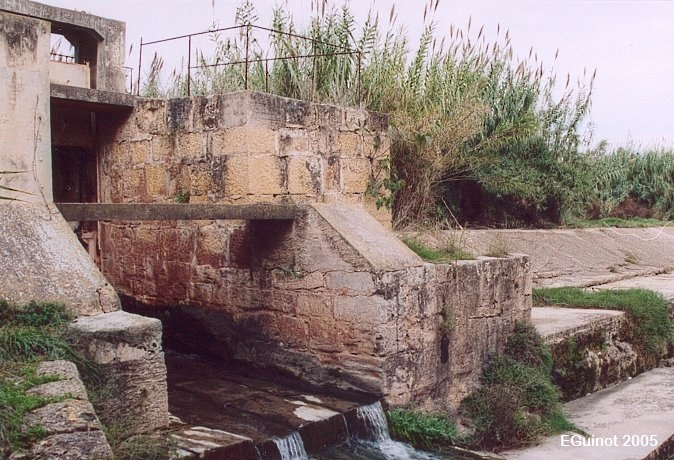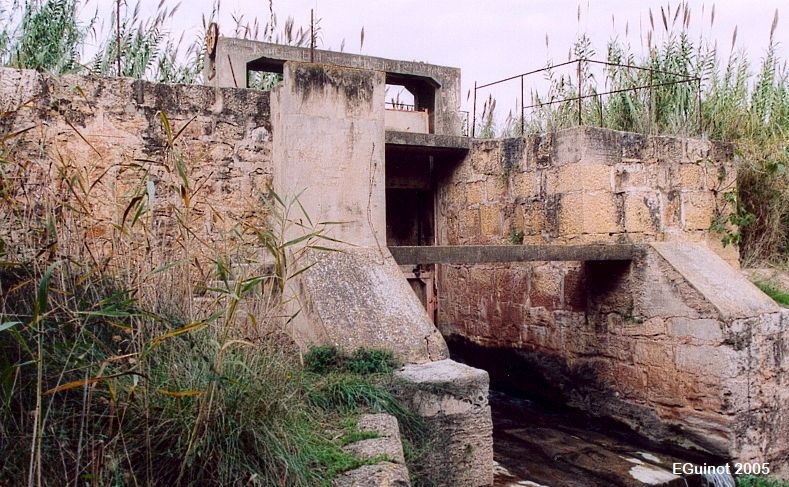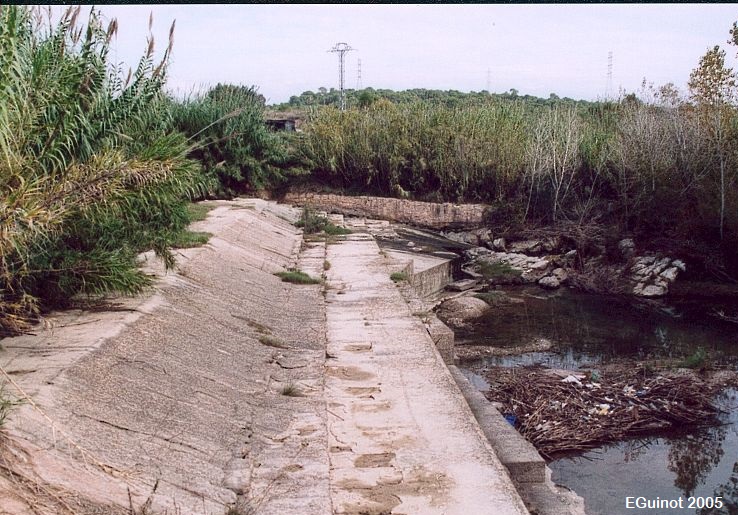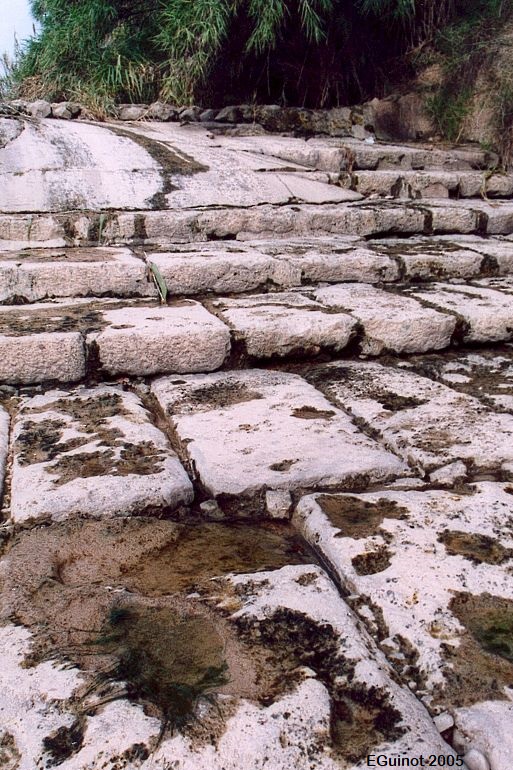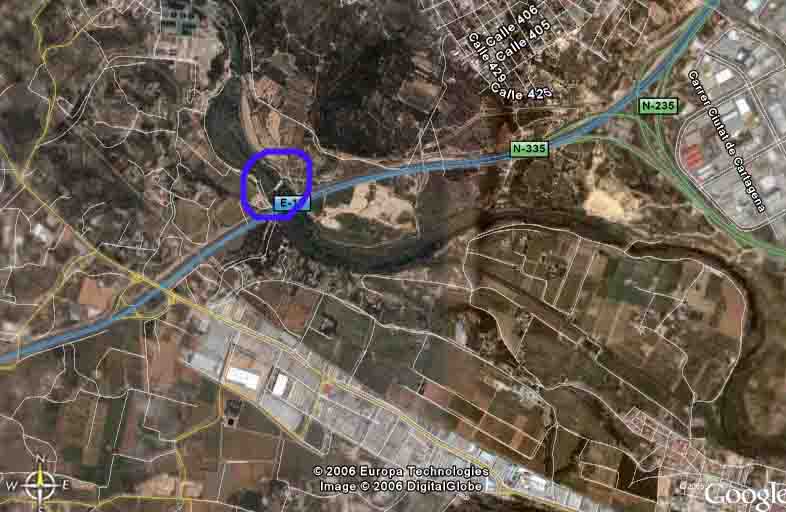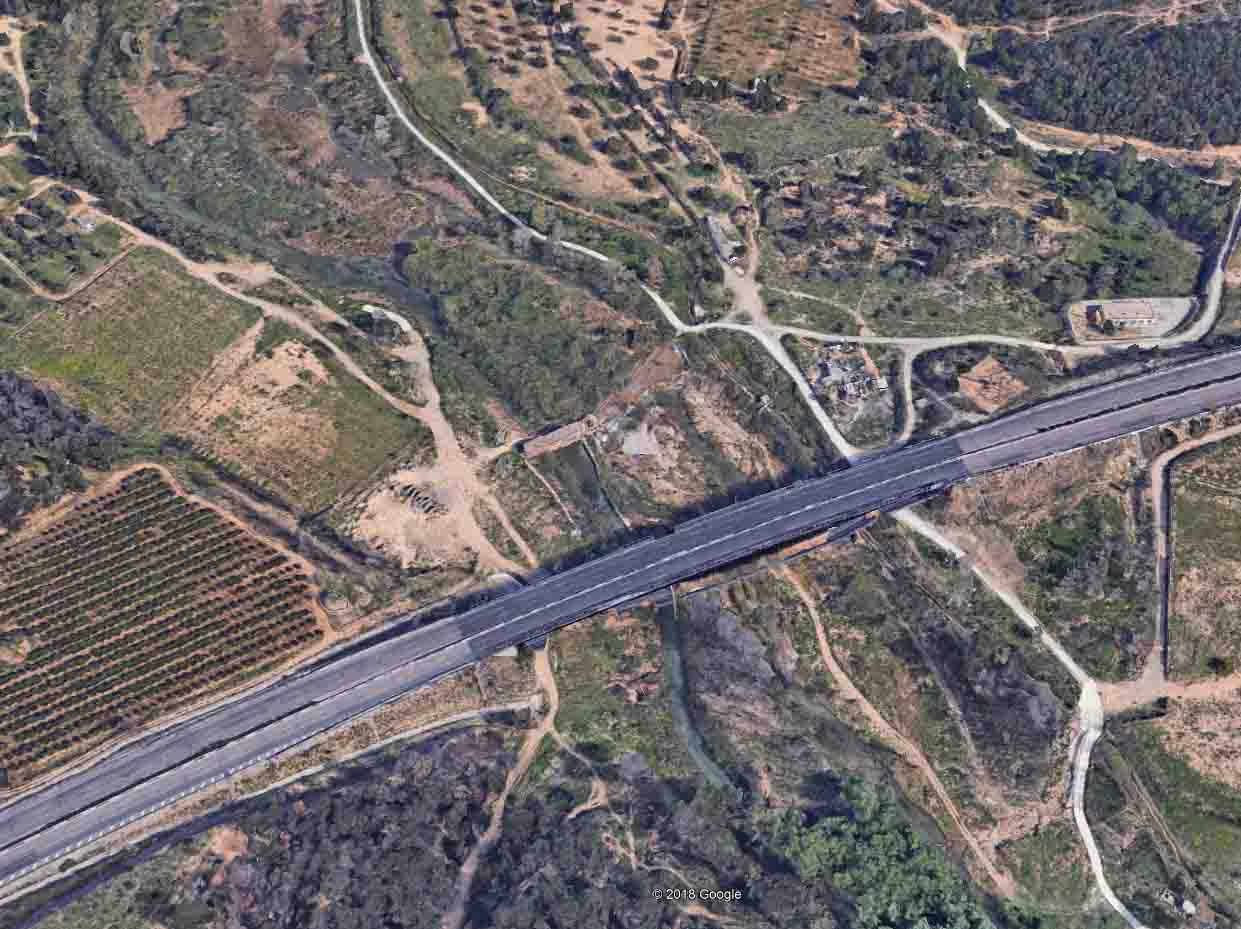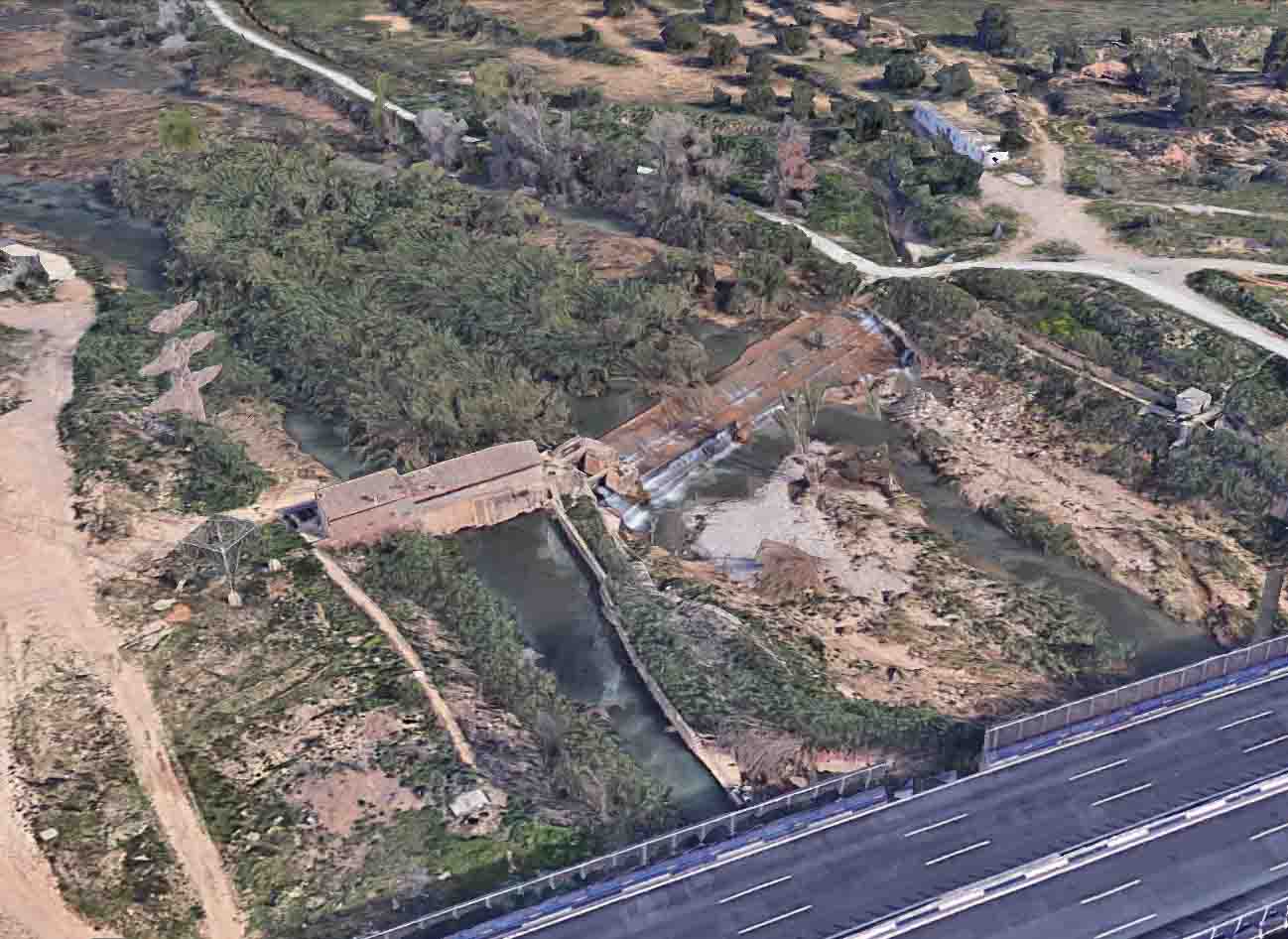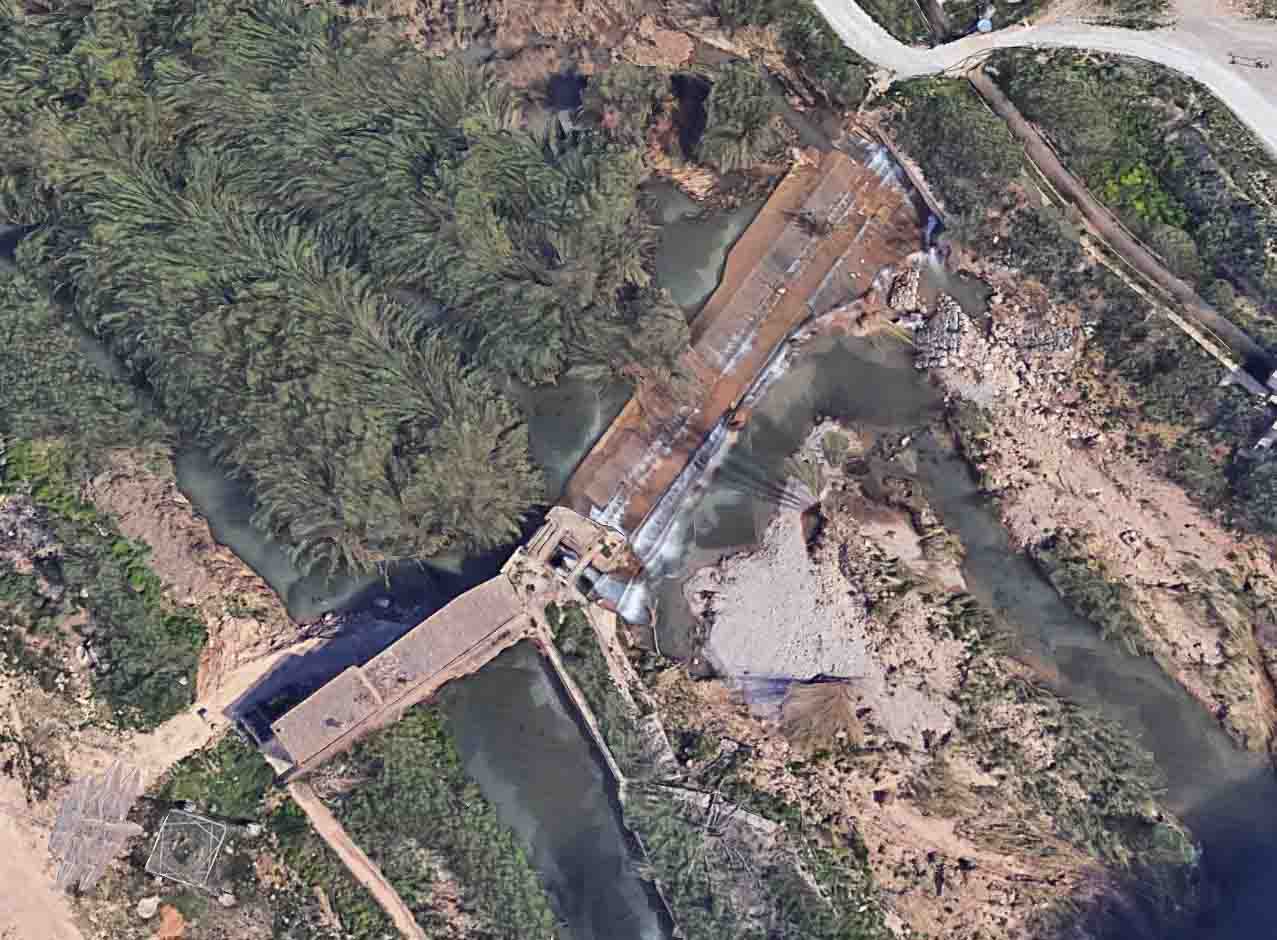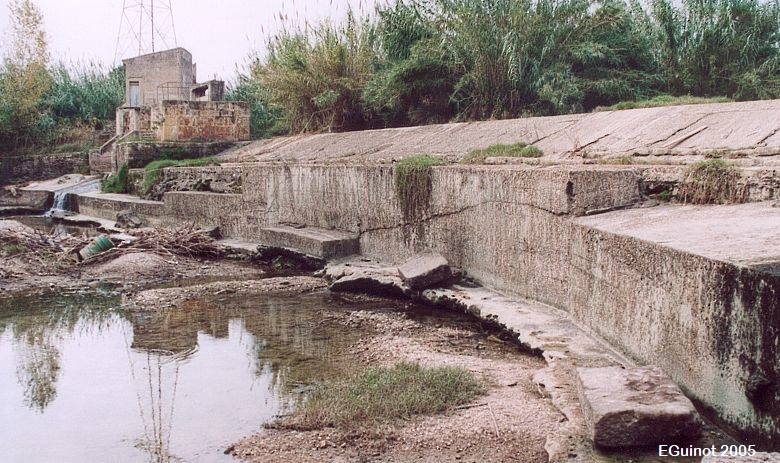
It is located in the middle of the Túria River, between the towns of Paterna and Manises, and is currently at the foot of the A-7 motorway viaduct, known as the València By-pass, over the river. The rest is approximately 500 meters (1640 ft) downstream from the diversion weir of the Séquia de Montcada (Montcada’s irrigation canal). The place can be accessed by a local road starting at the industrial estate of Fuente del Jarro, in Paterna, towards La Canyada. Just cross the A-7 via a bridge, then turn off onto another paved road on the left, which becomes a gravel road in the final stretch to cross the Simetes of Paterna road.
The entire diversion weir is in reasonably good condition, despite the impact of the floods, probably due to the modern nature of most of the current construction.
Islamic era, 11th-12th centuries, changes in the 16th and 20th centuries.
This diversion weir is the first in l’Horta of València to receive water from the Túria River on its right side. It is located between the Montcada diversion weir, upstream, and the Tormos one, downstream. The location of the diversion weir at this particular part of the river dates back to the origin of the construction of this irrigation system and the “séquia mare” (the main irrigation channel) of Quart-Benàger-Faitanar, that is, to the Islamic medieval period, reasonably before the 12th century. After the conquest by Jaume I (James I) in the 13th century, there were no relevant changes. During the medieval centuries, the structure was made of earth and logs, like the rest of the ancient diversion weirs, which was periodically rebuilt and repaired due to the flooding of the Túria River. In the same line as the other dams in l’Horta of València, it was first made of stone during the 17th century, with large slabs that can still be seen occasionally. However, at the beginning of the 20th century, the entire diversion weir, the gorge gates and the discharge channel underwent a thorough remodelling between 1905 and 1923 to allow the construction of a hydroelectric power station by the company VOLTA. Afterwards, and as a result of the flood of 1957, the sluice house was replaced with a fairly simple architecture, and the upper part of the stairs of the diversion weir was reinforced with concrete work that has partially modified the appearance of the complex.
The diversion weir is built taking advantage of a Túria River uprising to facilitate the entry of water into the séquia of Quart (Quart’s irrigation canal). It is currently a solid wall over 80 metres (26215⁄32 ft) long, perpendicular to the river, built with a base of mortar and stones, covered with large stone slabs that are longer than 1 metre and are between 30 (1113⁄16 in) and 40 cm (153⁄4 in) thick. These slabs are placed in the style of grandstands, with a total of 7 steps. It was clearly reinforced and extended at the beginning of the 20th century, specifically in 1923, when the power station was built downstream of the Daroqui mill. It now has an abundance of modern concrete covering part of the complex which has hidden some of the former stone steps. The sluice gate house also has its origins in the early 20th century, when the initial irrigation canal was extended by 5 metres (1613⁄32 ft) in 1905, as well as the large discharge channel beside it, which has two highly visible towers, linked to this modern extension. Everything is built with massive stone ashlars, although subsequent repairs have been made with concrete without any respect for the original technique and appearance.
- Catàleg de patrimoni del Pla d’Acció Territorial d’Ordenació i Dinamització de l’Horta de València. Element EPH_11.02. Assut de Quart-Benàger-Faitanar, pàg. 473-474.
- Identificación y descripción de los sistemas de regadío de l’Horta. Confederación hidrográfica del Júcar.
- Direcció General del Patrimoni de la Generalitat Valenciana.
- “Resolución de 7 de octubre de 2004, de la Dirección General de Patrimonio Cultural Valenciano de la Consejería de Cultura, Educación y Deporte, por la que se incoa expediente de declaración de bien de interés cultural, con categoría de conjunto histórico, a favor de los azudes de las acequias del Tribunal de las Aguas de Valencia y de la Real Acequia de Moncada, situados en Valencia, Paterna, Quart de Poblet y Manises, y de declaración de bienes de interés cultural, con categoría de monumento, de los mismos”.
- «BOE» núm. 291, de 3 de diciembre de 2004, páginas 40299 a 40306.
- Declaració com Bé d’Interés Cultural (BIC) dels assuts de l’Horta de València, any 2006, per la Generalitat Valenciana, Decret 148/2006.
GUINOT, E i SELMA, S (2005, inèdit). Les séquies de l’Horta Sud de València: Rovella, Favara, Mislata-Xirivella, Benàger-Faitanar i Quart. València, Conselleria d’Agricultura-Generalitat Valenciana.
GUINOT, E.; SELMA, S., LLORIA, R. El patrimoni hidràulic de les séquies del Tribunal de les Aigües de València. Informe elaborat per a la Direcció General de Patrimoni de la Generalitat Valenciana, Conselleria de Cultura, València, 2003.
SELMA CASTELL, Sergi. Paisatges històrics, patrimoni i didàctica. (Les séquies i les hortes del Tribunal de les Aigües de València). Tesi doctoral publicada en PDF. Castelló, Universitat Jaume I de Castelló, 2014, pp. 275-276.
Photos: E. Guinot, Google Earth



